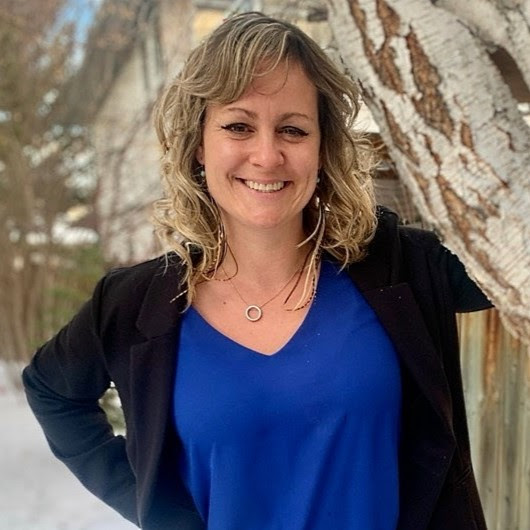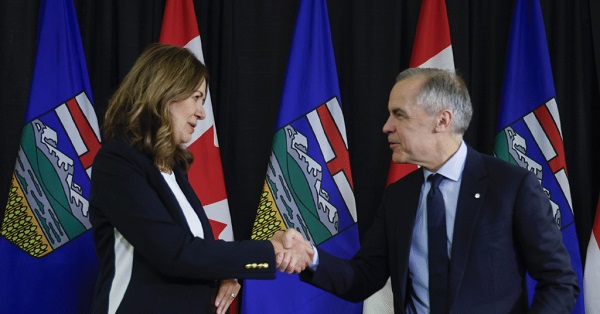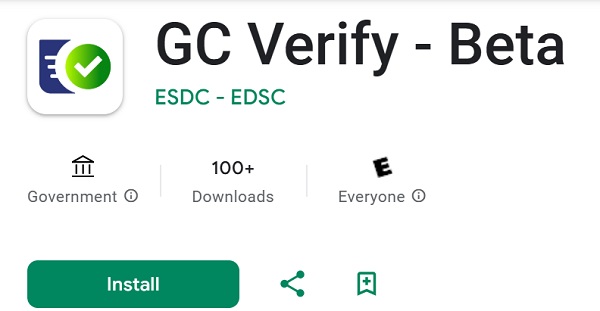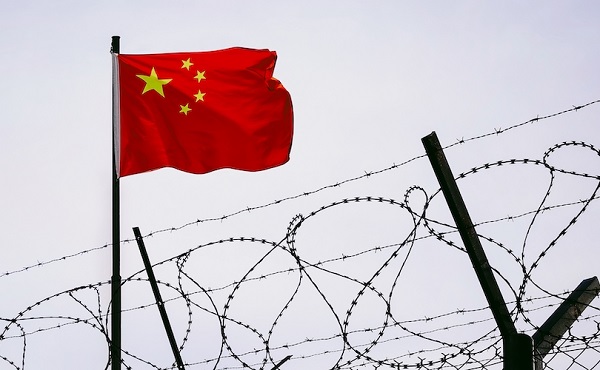Alberta
No Matter Which Formula, Albertans Win With An Alberta Pension Plan

From the Alberta Institute
Guest Post By Lindsay Wilson
Opponents of the Alberta Pension Plan (APP) have wasted no time busting out the pitchforks, with their legacy media lapdogs hard at work toeing the line for the union big wigs and their NDP friends.
It’s merely weeks into the launch of a province-wide public consultation to educate and get feedback from Albertans on an APP and there is no shortage of Trudeau-funded media penning pieces laden with misinformation.
They’re pushing a fear-based narrative that has seniors running scared and reasonable people questioning whether the bold move isn’t a little selfish which is no different than what Quebec has been doing — quite successfully — since day one.
For us here at Alberta Proud, we not only think opting out of the Canada Pension Plan (CPP) and establishing an APP is a great idea — it’s a critical step toward more Alberta autonomy.
If we don’t, will we ever achieve much of anything in the arena of autonomy? Think about it: if we can’t win a referendum on the one thing we don’t need permission from Ottawa to do, where does that leave us?
More Alberta and Less Ottawa isn’t just a pie in the sky for us at Alberta Proud. It’s our mantra.
We genuinely believe enough is enough. It’s time for Ottawa to take a hike, including their antiquated equalization formula that you voted 62% in favour of scrapping.
We now have an opportunity to leave the CPP, in favour of a made-in-Alberta plan which must offer the same or better benefits. And it will, without question, put more money into your pocket every year as we finally won’t be overcontributing.
The newest twist in the anti-APP narrative is casting doubt on the formula the independent, government-commissioned LifeWorks report produced: that 53% of the CPP assets ($334 billion) would be owed to Alberta.
By switching to an APP, that translates to putting an additional $1,425 back into each employee’s pocket, according to LifeWorks, and when you consider the employer’s contribution, that amount is effectively doubled.
That’s a huge incentive for Alberta employers, those coming here to work and for the majority of hard-working everyday people who are drowning in this era of inflation (or #justinflation as we like to call it at Alberta Proud).
Meanwhile in the mainstream media, economist Trevor Tombe is balking at the math, claiming Albertans will be owed around one-third of what LifeWorks has assessed.
While it may seem odd everyone is arriving at different numbers, here is the kicker: even if we leave with only 17% (among the lower estimates floating around and not the 25% estimated by Tombe or the 53% estimated by LifeWorks) it’s still a better deal for Albertans.
But how, you ask? Simply put, we would finally get a break from this hidden transfer program, which is yet another way in which hardworking Albertans subsidize the rest of the country.
We have a comparatively younger population and because of this, we have paid more than we have collected. It has always been this way for us, and it doesn’t look like that will change. In the past year, a record 185,000 new Albertans moved here to work and take advantage of our low taxes and abundant opportunities. Any way you slice it, our contribution rate would fall.
Another concern is around who will manage an APP.
While the opposition is quick to point out CPP investment returns have been decent and that an APP would be best not left in the hands of AIMCo, did you know we could very well use the same pension fund manager as the CPP or another arms-length, third party?
By putting Alberta first, you will not risk your pension.
By switching to an APP, you will put more money in your pocket.
Ottawa has long turned its back on Albertans and continues to hit us with eco-radical regulations that will leave us broke and freezing in the dark. If we stay in the CPP, we are sending them a message that they can keep pushing us around, forever, no matter what they do to us.
It’s time for a change.
So, take a moment to fill out the Alberta government survey.
Send emails to your MLA, Finance Minister Nate Horner and Premier Danielle Smith. Show up to the townhalls.
Alberta’s future of more autonomy depends on all of us getting loud and Alberta Proud!
Lindsay Wilson is the President of Alberta Proud, a group of citizens concerned about Alberta’s future within Canada.
Alberta
Ottawa-Alberta agreement may produce oligopoly in the oilsands

From the Fraser Institute
By Jason Clemens and Elmira Aliakbari
The federal and Alberta governments recently jointly released the details of a memorandum of understanding (MOU), which lays the groundwork for potentially significant energy infrastructure including an oil pipeline from Alberta to the west coast that would provide access to Asia and other international markets. While an improvement on the status quo, the MOU’s ambiguity risks creating an oligopoly.
An oligopoly is basically a monopoly but with multiple firms instead of a single firm. It’s a market with limited competition where a few firms dominate the entire market, and it’s something economists and policymakers worry about because it results in higher prices, less innovation, lower investment and/or less quality. Indeed, the federal government has an entire agency charged with worrying about limits to competition.
There are a number of aspects of the MOU where it’s not sufficiently clear what Ottawa and Alberta are agreeing to, so it’s easy to envision a situation where a few large firms come to dominate the oilsands.
Consider the clear connection in the MOU between the development and progress of Pathways, which is a large-scale carbon capture project, and the development of a bitumen pipeline to the west coast. The MOU explicitly links increased production of both oil and gas (“while simultaneously reaching carbon neutrality”) with projects such as Pathways. Currently, Pathways involves five of Canada’s largest oilsands producers: Canadian Natural, Cenovus, ConocoPhillips Canada, Imperial and Suncor.
What’s not clear is whether only these firms, or perhaps companies linked with Pathways in the future, will have access to the new pipeline. Similarly, only the firms with access to the new west coast pipeline would have access to the new proposed deep-water port, allowing access to Asian markets and likely higher prices for exports. Ottawa went so far as to open the door to “appropriate adjustment(s)” to the oil tanker ban (C-48), which prevents oil tankers from docking at Canadian ports on the west coast.
One of the many challenges with an oligopoly is that it prevents new entrants and entrepreneurs from challenging the existing firms with new technologies, new approaches and new techniques. This entrepreneurial process, rooted in innovation, is at the core of our economic growth and progress over time. The MOU, though not designed to do this, could prevent such startups from challenging the existing big players because they could face a litany of restrictive anti-development regulations introduced during the Trudeau era that have not been reformed or changed since the new Carney government took office.
And this is not to criticize or blame the companies involved in Pathways. They’re acting in the interests of their customers, staff, investors and local communities by finding a way to expand their production and sales. The fault lies with governments that were not sufficiently clear in the MOU on issues such as access to the new pipeline.
And it’s also worth noting that all of this is predicated on an assumption that Alberta can achieve the many conditions included in the MOU, some of which are fairly difficult. Indeed, the nature of the MOU’s conditions has already led some to suggest that it’s window dressing for the federal government to avoid outright denying a west coast pipeline and instead shift the blame for failure to the Smith government.
Assuming Alberta can clear the MOU’s various hurdles and achieve the development of a west coast pipeline, it will certainly benefit the province and the country more broadly to diversify the export markets for one of our most important export products. However, the agreement is far from ideal and could impose much larger-than-needed costs on the economy if it leads to an oligopoly. At the very least we should be aware of these risks as we progress.

Elmira Aliakbari
Alberta
A Christmas wish list for health-care reform

From the Fraser Institute
By Nadeem Esmail and Mackenzie Moir
It’s an exciting time in Canadian health-care policy. But even the slew of new reforms in Alberta only go part of the way to using all the policy tools employed by high performing universal health-care systems.
For 2026, for the sake of Canadian patients, let’s hope Alberta stays the path on changes to how hospitals are paid and allowing some private purchases of health care, and that other provinces start to catch up.
While Alberta’s new reforms were welcome news this year, it’s clear Canada’s health-care system continued to struggle. Canadians were reminded by our annual comparison of health care systems that they pay for one of the developed world’s most expensive universal health-care systems, yet have some of the fewest physicians and hospital beds, while waiting in some of the longest queues.
And speaking of queues, wait times across Canada for non-emergency care reached the second-highest level ever measured at 28.6 weeks from general practitioner referral to actual treatment. That’s more than triple the wait of the early 1990s despite decades of government promises and spending commitments. Other work found that at least 23,746 patients died while waiting for care, and nearly 1.3 million Canadians left our overcrowded emergency rooms without being treated.
At least one province has shown a genuine willingness to do something about these problems.
The Smith government in Alberta announced early in the year that it would move towards paying hospitals per-patient treated as opposed to a fixed annual budget, a policy approach that Quebec has been working on for years. Albertans will also soon be able purchase, at least in a limited way, some diagnostic and surgical services for themselves, which is again already possible in Quebec. Alberta has also gone a step further by allowing physicians to work in both public and private settings.
While controversial in Canada, these approaches simply mirror what is being done in all of the developed world’s top-performing universal health-care systems. Australia, the Netherlands, Germany and Switzerland all pay their hospitals per patient treated, and allow patients the opportunity to purchase care privately if they wish. They all also have better and faster universally accessible health care than Canada’s provinces provide, while spending a little more (Switzerland) or less (Australia, Germany, the Netherlands) than we do.
While these reforms are clearly a step in the right direction, there’s more to be done.
Even if we include Alberta’s reforms, these countries still do some very important things differently.
Critically, all of these countries expect patients to pay a small amount for their universally accessible services. The reasoning is straightforward: we all spend our own money more carefully than we spend someone else’s, and patients will make more informed decisions about when and where it’s best to access the health-care system when they have to pay a little out of pocket.
The evidence around this policy is clear—with appropriate safeguards to protect the very ill and exemptions for lower-income and other vulnerable populations, the demand for outpatient healthcare services falls, reducing delays and freeing up resources for others.
Charging patients even small amounts for care would of course violate the Canada Health Act, but it would also emulate the approach of 100 per cent of the developed world’s top-performing health-care systems. In this case, violating outdated federal policy means better universal health care for Canadians.
These top-performing countries also see the private sector and innovative entrepreneurs as partners in delivering universal health care. A relationship that is far different from the limited individual contracts some provinces have with private clinics and surgical centres to provide care in Canada. In these other countries, even full-service hospitals are operated by private providers. Importantly, partnering with innovative private providers, even hospitals, to deliver universal health care does not violate the Canada Health Act.
So, while Alberta has made strides this past year moving towards the well-established higher performance policy approach followed elsewhere, the Smith government remains at least a couple steps short of truly adopting a more Australian or European approach for health care. And other provinces have yet to even get to where Alberta will soon be.
Let’s hope in 2026 that Alberta keeps moving towards a truly world class universal health-care experience for patients, and that the other provinces catch up.
-

 International1 day ago
International1 day agoGeorgia county admits illegally certifying 315k ballots in 2020 presidential election
-

 Digital ID2 days ago
Digital ID2 days agoCanadian government launches trial version of digital ID for certain licenses, permits
-

 International1 day ago
International1 day agoCommunist China arrests hundreds of Christians just days before Christmas
-

 Business2 days ago
Business2 days agoThe “Disruptor-in-Chief” places Canada in the crosshairs
-

 Business21 hours ago
Business21 hours agoSome Of The Wackiest Things Featured In Rand Paul’s New Report Alleging $1,639,135,969,608 In Gov’t Waste
-

 Alberta1 day ago
Alberta1 day agoCalgary’s new city council votes to ban foreign flags at government buildings
-

 Business1 day ago
Business1 day agoWarning Canada: China’s Economic Miracle Was Built on Mass Displacement
-

 Energy11 hours ago
Energy11 hours agoThe Top News Stories That Shaped Canadian Energy in 2025 and Will Continue to Shape Canadian Energy in 2026




